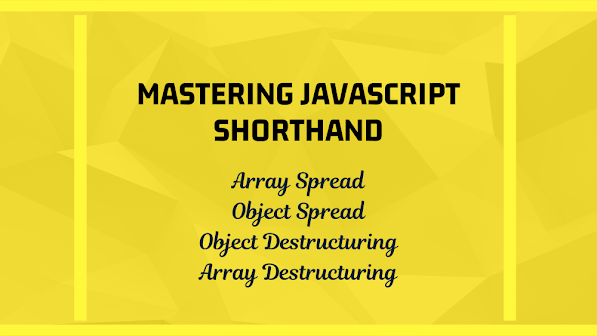Introduction
As a JavaScript developer, you're likely familiar with the importance of writing clean and efficient code. One way to achieve this is by using shorthand techniques, which can significantly simplify your code and make it more readable. In this blog, we'll explore some powerful shorthand techniques in JavaScript that will help you write code faster and with greater clarity. From destructuring assignments to spread syntax, these techniques will level up your coding skills and boost your productivity.
1. Destructuring Assignment
Destructuring assignment unpacks values from arrays or properties from objects into distinct variables, making it easier to work with complex data structures.
2. Array Destructuring
Array destructuring allows you to extract individual elements from an array and assign them to separate variables.
3. Object Destructuring
Similar to array destructuring, object destructuring unpacks object properties into variables, simplifying property access.
4. Array Spread
The array spread operator can be used to create a new array by merging existing arrays or adding elements to an array.
5. Spread Syntax
The spread syntax (...) unpacks elements from arrays or properties from objects into new arrays or objects. It simplifies tasks like array cloning, merging, and function arguments.
6. Object Spread
Similar to array spread, object spread allows you to merge objects or add properties to an object easily.
Conclusion
By mastering these JavaScript shorthand techniques, you can significantly enhance your coding efficiency and produce more elegant and concise code. Destructuring assignments, spread syntax, and object shorthand will empower you to handle complex data structures and reduce redundant code. As you apply these shorthand techniques in your projects, you'll experience improved readability and increased productivity in your JavaScript development journey.
Feel Free to comment your thoughts regarding the topic









0 Comments